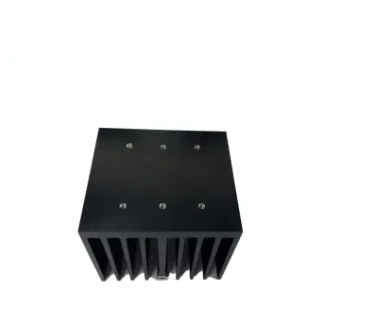- Time:2024/07/11 Posted:Dongguan Quality Innovation And Technology Co.,Ltd
Choosing the right low-power aluminum heatsink for your cable box setup is crucial to ensure optimal performance and longevity of your electronic devices. Cable boxes often generate heat during operation, and an effective heatsink helps dissipate this heat efficiently, preventing overheating and potential damage. Here’s a guide to help you select the best heatsink for your needs:

1. Understand Heat Dissipation Requirements
Before selecting a heatsink, assess the heat dissipation requirements of your cable box. Consider factors such as the power consumption of the device, the space available for installation, and the ambient temperature of the operating environment. Low-power cable boxes typically require heatsinks with moderate thermal resistance to effectively manage heat without excessive cooling capacity.
2. Choose the Right Size and Dimensions
Heatsinks come in various sizes and shapes, so it’s essential to choose one that fits your cable box setup. Measure the available space inside the enclosure where the heatsink will be installed. Ensure that the heatsink has sufficient surface area and fin density to dissipate heat effectively. Opt for a size that allows adequate airflow around the heatsink for optimal cooling efficiency.
3. Consider Thermal Conductivity
The thermal conductivity of the heatsink material, typically aluminum or copper, directly affects its heat dissipation capability. Aluminum heatsinks are lightweight, cost-effective, and suitable for low-power applications like cable boxes. They offer good thermal conductivity and are corrosion-resistant. Copper heatsinks, while more expensive, have higher thermal conductivity and may be necessary for higher-power devices.
4. Evaluate Fin Design and Airflow
The design of the heatsink fins plays a critical role in heat dissipation. Look for heatsinks with optimized fin designs, such as straight fins or pin fins, that maximize surface area for better airflow and heat transfer. Consider the spacing between fins, as denser fin spacing enhances heat dissipation efficiency but may require more airflow.
5. Check Mounting Options
Ensure that the heatsink you choose is compatible with the mounting options available in your cable box setup. Heatsinks typically come with mounting holes or clips for secure attachment to the device’s heat-generating components, such as processors or voltage regulators. Verify the mounting mechanism and ensure it provides reliable thermal contact between the heatsink and the heat source.
6. Factor in Noise Considerations
Some heatsinks feature fans or passive cooling designs. While fans can provide additional cooling capacity, they may generate noise, which can be a concern in quiet environments or residential settings. Passive heatsinks, relying solely on natural convection for cooling, offer silent operation but may require larger surface areas to achieve effective heat dissipation.
7. Assess Durability and Longevity
Choose a heatsink that is durable and built to last. Aluminum heatsinks are generally robust and resistant to corrosion, making them suitable for long-term use in electronic devices. Consider the quality of materials and construction to ensure the heatsink can withstand continuous operation and environmental factors such as humidity and temperature fluctuations.
8. Cost and Budget Considerations
Finally, consider your budget when selecting a heatsink for your cable box. Aluminum heatsinks are typically more cost-effective than copper heatsinks, making them a practical choice for low-power applications. Compare prices, but prioritize quality and performance to ensure efficient heat management and reliable operation of your cable box.
Conclusion
Selecting the best low-power aluminum heatsink for your cable box setup involves understanding heat dissipation requirements, choosing the right size and dimensions, evaluating thermal conductivity, considering fin design and airflow, checking mounting options, assessing noise considerations, prioritizing durability, and considering cost. By carefully evaluating these factors, you can choose a heatsink that effectively manages heat, enhances the performance of your cable box, and ensures its longevity. Investing in a quality heatsink is essential for maintaining optimal operating conditions and preventing overheating-related issues in electronic devices.
